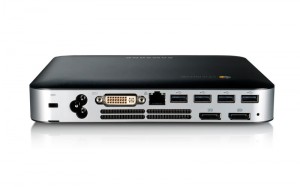If you’re starting to feel like everyone you know has an iPhone or a Droid within arm’s reach at all times, you’re not far off. A new survey by the Pew Internet & American Life Project finds that nearly half of American adults, 46 percent, use a smartphone.
The survey, conducted last month, shows smartphones are now more popular than traditional cell phones, which are used by 41 percent of Americans. Adoption of smartphones has surged 11 percent since the previous Pew survey in May 2011.
The new numbers make it clearer than ever that every business needs to have an Internet presence that’s accessible to mobile devices, whether that means a mobile-friendly website, an app or just a great presence on social media. An IT consulting provider can help optimize websites and other offerings to best reach the smartphone-carrying audience.
Popular stereotypes notwithstanding, mobile devices aren’t just for the wealthy or the young. The Pew survey found use of smartphones growing among all demographics. Across almost all income levels, age groups and other categories, there was significant growth in smartphone adoption over the past nine months.
For example, use of smartphones by people between 45 and 54 years old grew from 28 to 44 percent, and use by those with household income levels below $30,000 grew from 22 to 34 percent.
Still, there is significant variation in adoption by different groups. A full 71 percent of people between the ages of 25 and 34 use a smartphone, as do 68 percent of those with household incomes of $75,000 or more. Only 13 percent of those 65 or older have a smartphone, and only 25 percent of people with less than a high school education have one.
The smartphone market is divided almost evenly between Androids and iPhones. Twenty percent of all cell phone owners have an Android device, while 19 percent have an iPhone. Another 6 percent have a Blackberry, 2 percent use a Windows system and 1 percent use a Palm device. The absence of a single operating system points to the need for managed IT services in ensuring that web offerings are compatible with different sorts of phones.
As the smartphone market has grown, the percentage of Americans using traditional cell phones has declined from 48 percent to 41 percent. The percentage of Americans without any cell phone also continues to decline, dropping to just 12 percent in February compared with 17 percent last May.
It’s worth noting that the Pew survey is just about smartphones and doesn’t account for the growing adoption of iPads and other tablet devices, a trend that makes the importance of IT support for mobile devices even more apparent.


